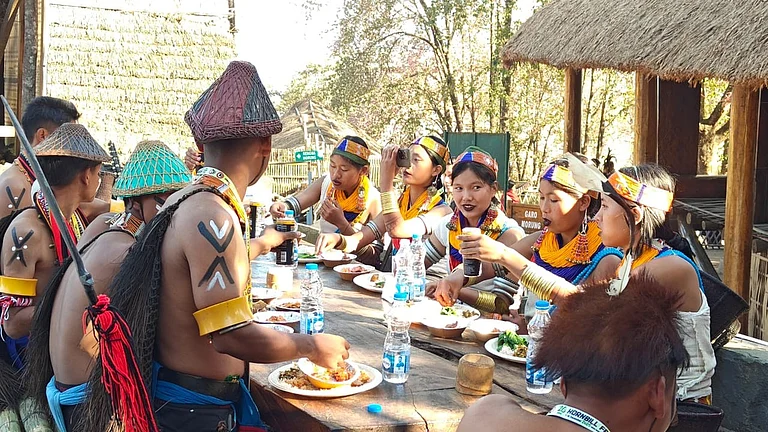In a recent study led by Indian researchers, individuals with blood type A from the Chakhesang Naga tribe in Nagaland have been found to exhibit significantly higher susceptibility to chronic health conditions, particularly hypertension and type 2 diabetes.
This discovery has important implications for public health, especially in the context of indigenous populations in Northeast India. More so, because the Chakhesang Naga tribe is among the most prominent in the region, with their health concerns indicative of genetic composition, physical activity levels, and limited access to healthcare services.
Primarily settled in the Phek district of Nagaland, the Chakhesang tribe, was selected for the study due to previously recorded high rates of lifestyle-related non-communicable diseases (NCDs), particularly among middle-aged and elderly populations, said the researchers.
The study involved 100 voluntary participants, equally divided by sex, and further categorized into control and patient groups based on clinical diagnosis and health histories. Blood samples were collected and assessed using the standard ABD antisera typing kit.
Using genetic tools such as Hardy-Weinberg equilibrium models and chi-square analysis, researchers established a statistically significant correlation between blood type A and the presence of both hypertension and diabetes.
The data showed that individuals with blood type A had an odds ratio (OR) of 4.4 for developing hypertension and 4.6 for diabetes, compared to those with other blood types.
“This implies that blood type A individuals were over four times more likely to develop these conditions than their type B or type O counterparts. Conversely, blood type B appeared to be associated with a statistically lower risk, while type O—though most common in the population—showed no significant association with either disease,” said Dr. Giridharan Bupesh, one of the principal investigators from Department of Forestry, Nagaland University.
“While blood type associations with disease have been studied in various populations globally, this is one of the first focused inquiries within the Chakhesang community. The high odds ratios are indicative of a potential hereditary component that warrants further investigation.”
To understand the broader genetic framework, the team employed neighbor-joining phylogenetic trees and principal coordinate analysis (PCoA), which revealed that the Chakhesang tribe shares close genetic ties with neighbouring tribes such as the Sumi, yet remains genetically distinct from the larger Indian mainland populations. This isolation could partly explain the unique health patterns observed in this group.
Experts caution, however, that genetic predisposition alone does not tell the full story. The study acknowledges its limitations, primarily its small sample size, which restricts the generalizability of the findings. The authors have advocated for larger, longitudinal studies across multiple Naga tribes to build a comprehensive understanding of genetic health risks in the northeast.
“There's been a dietary shift from traditional millet and vegetable-based diets to more carbohydrate-rich, processed food patterns, especially among younger generations,” noted Dr. Jogeswar Panigrahi, co-author of the study from Department of Biotechnology, Berhampur University, Bihar. “These changes, combined with genetic vulnerabilities, could exacerbate chronic disease burdens.”
When contacted, Dr Ramakant Yadav, Professor at Department of Medicine at All India Institute of Ayurveda, Delhi who is not associated with the study, commented, “with India facing a growing diabetes and hypertension crisis—particularly in underserved regions—the findings from this tribal context underscore the need for culturally tailored public health interventions."
“Also, more studies need to be done for better understanding and optimisation of these interventions," he echoed the concerns of the researchers of the study.


























